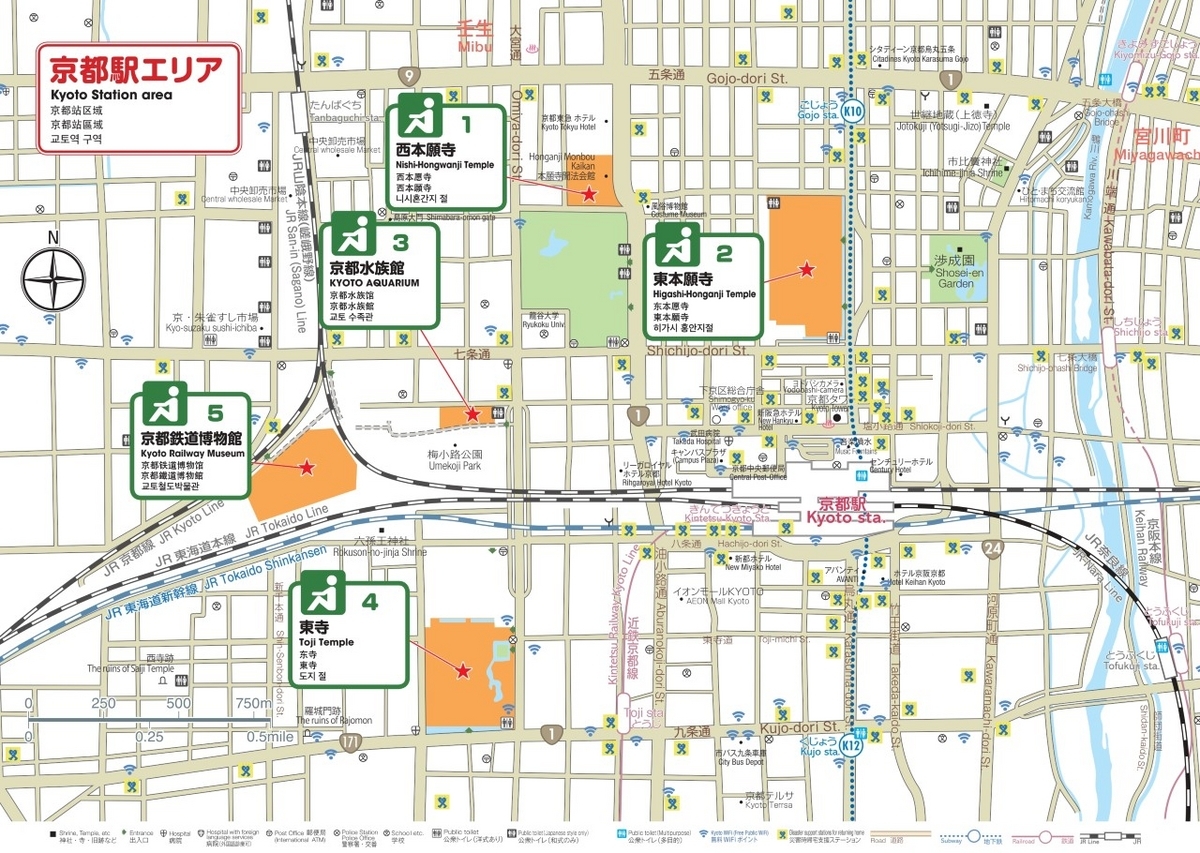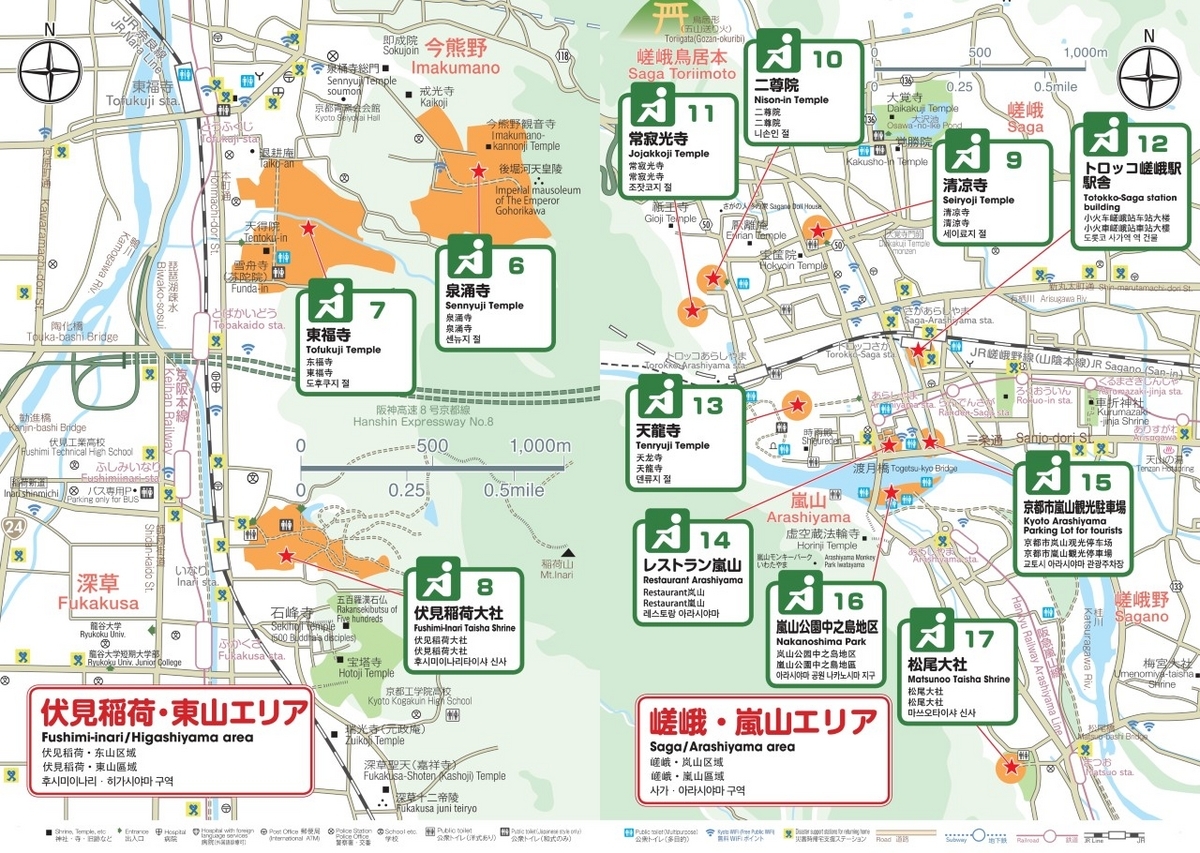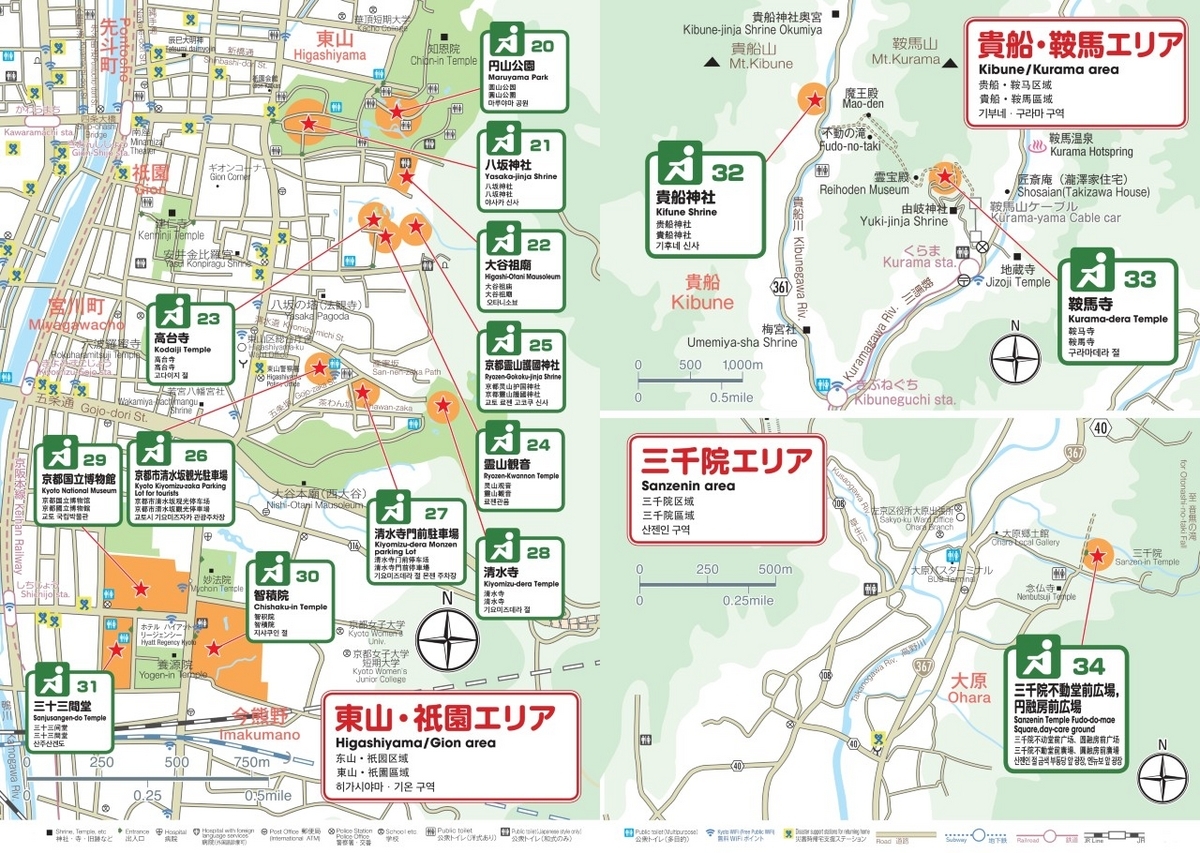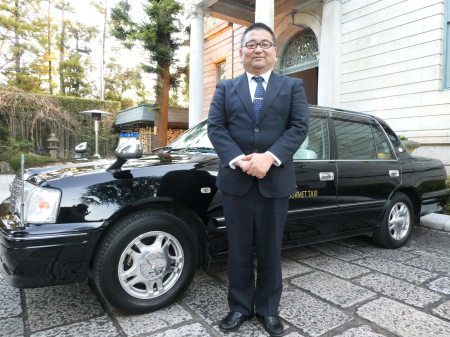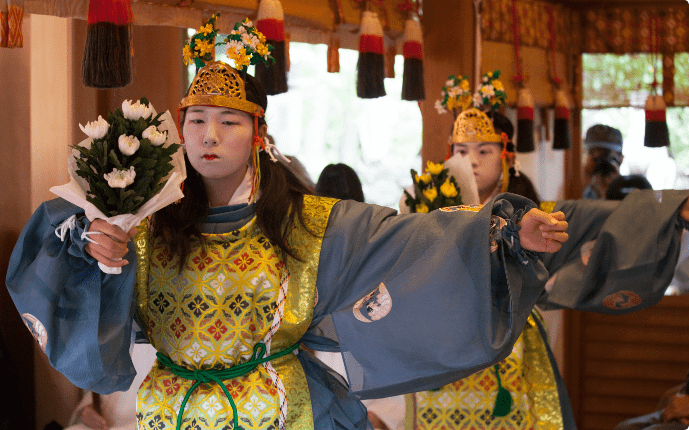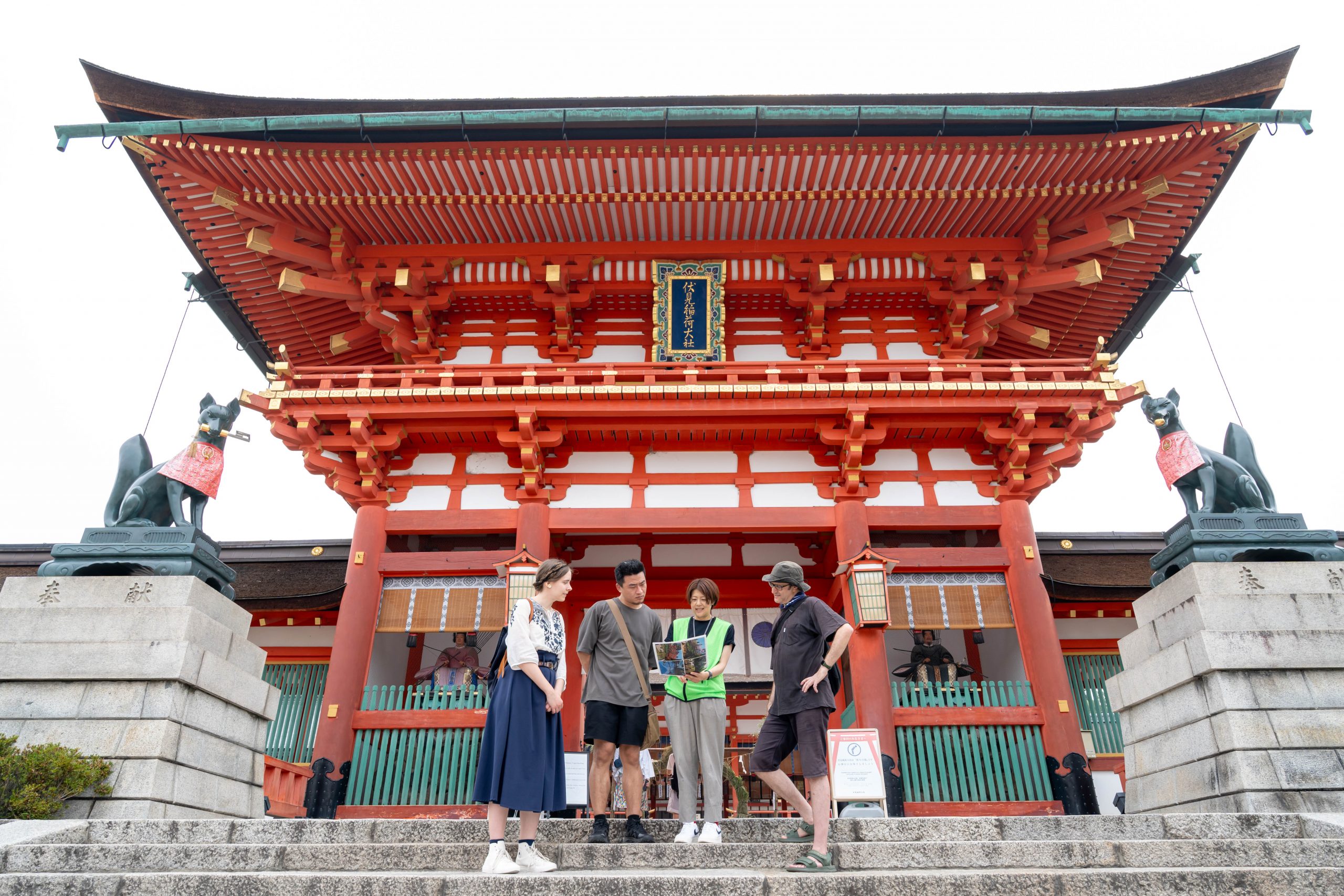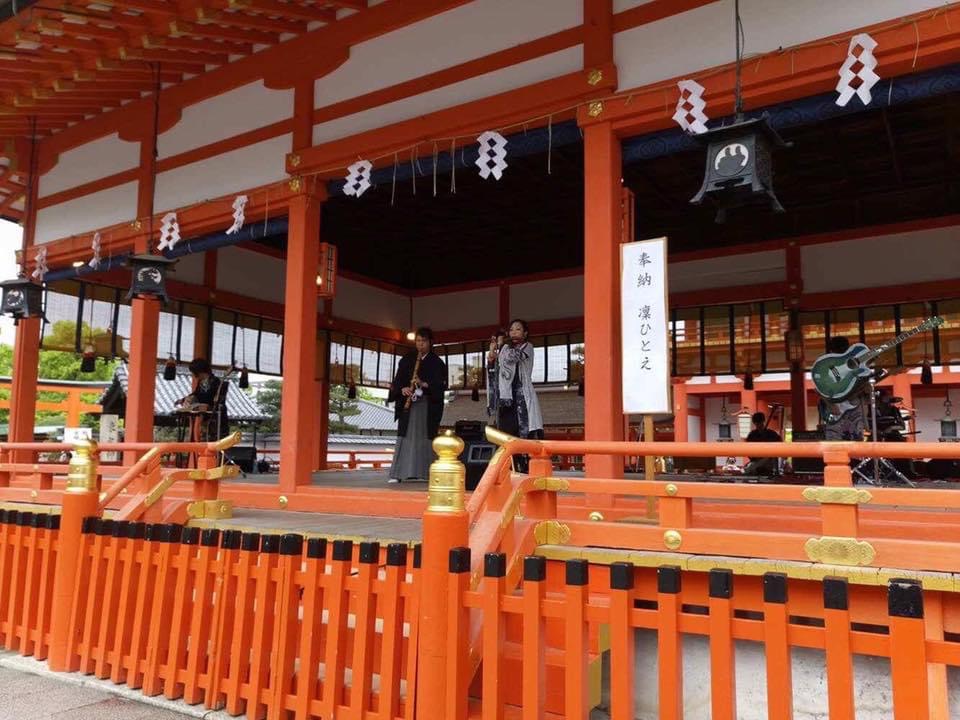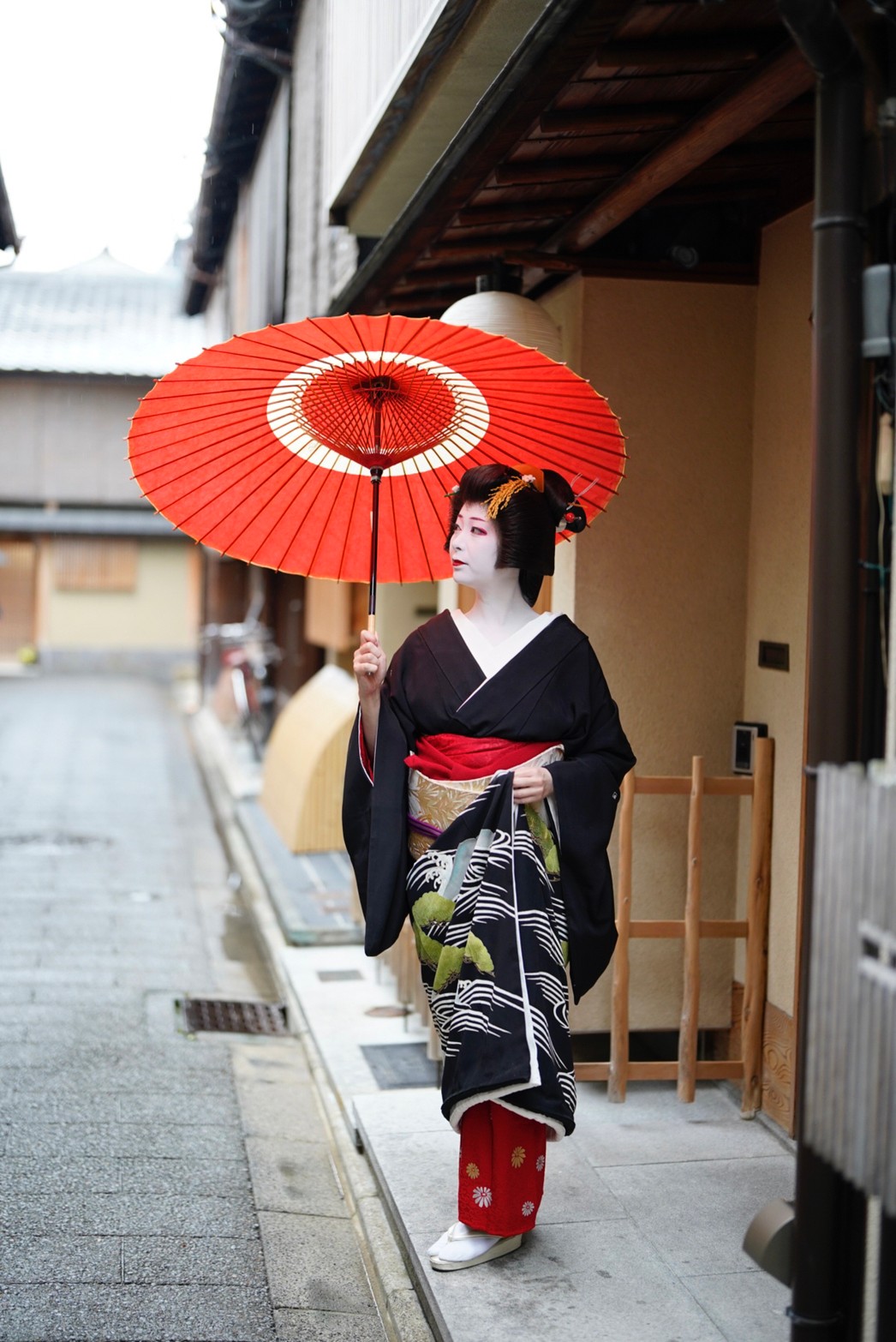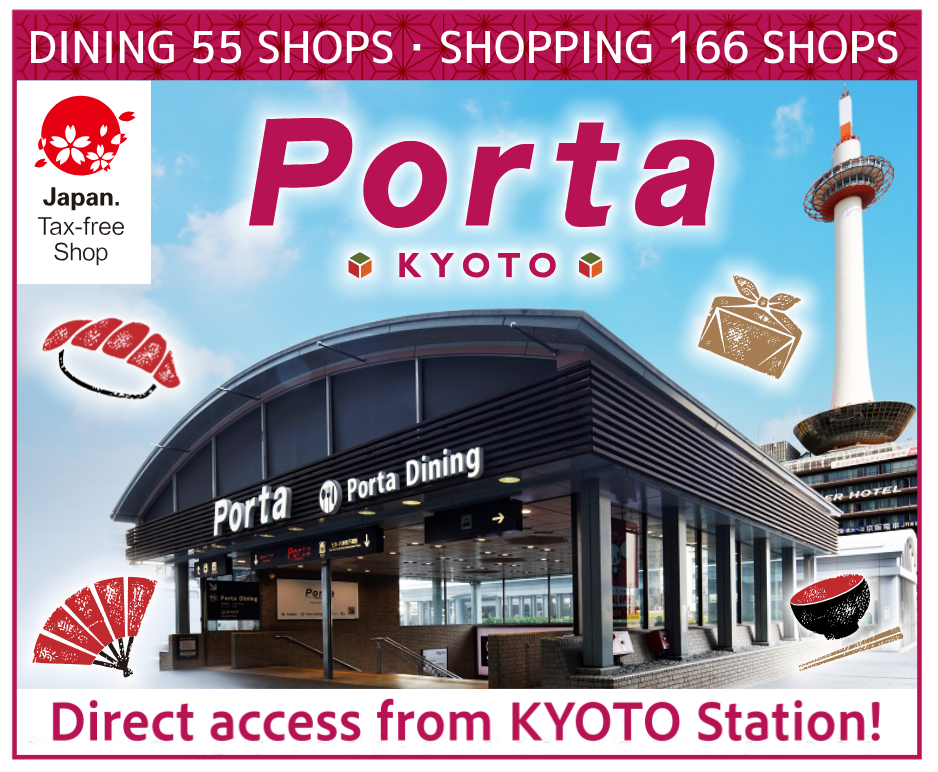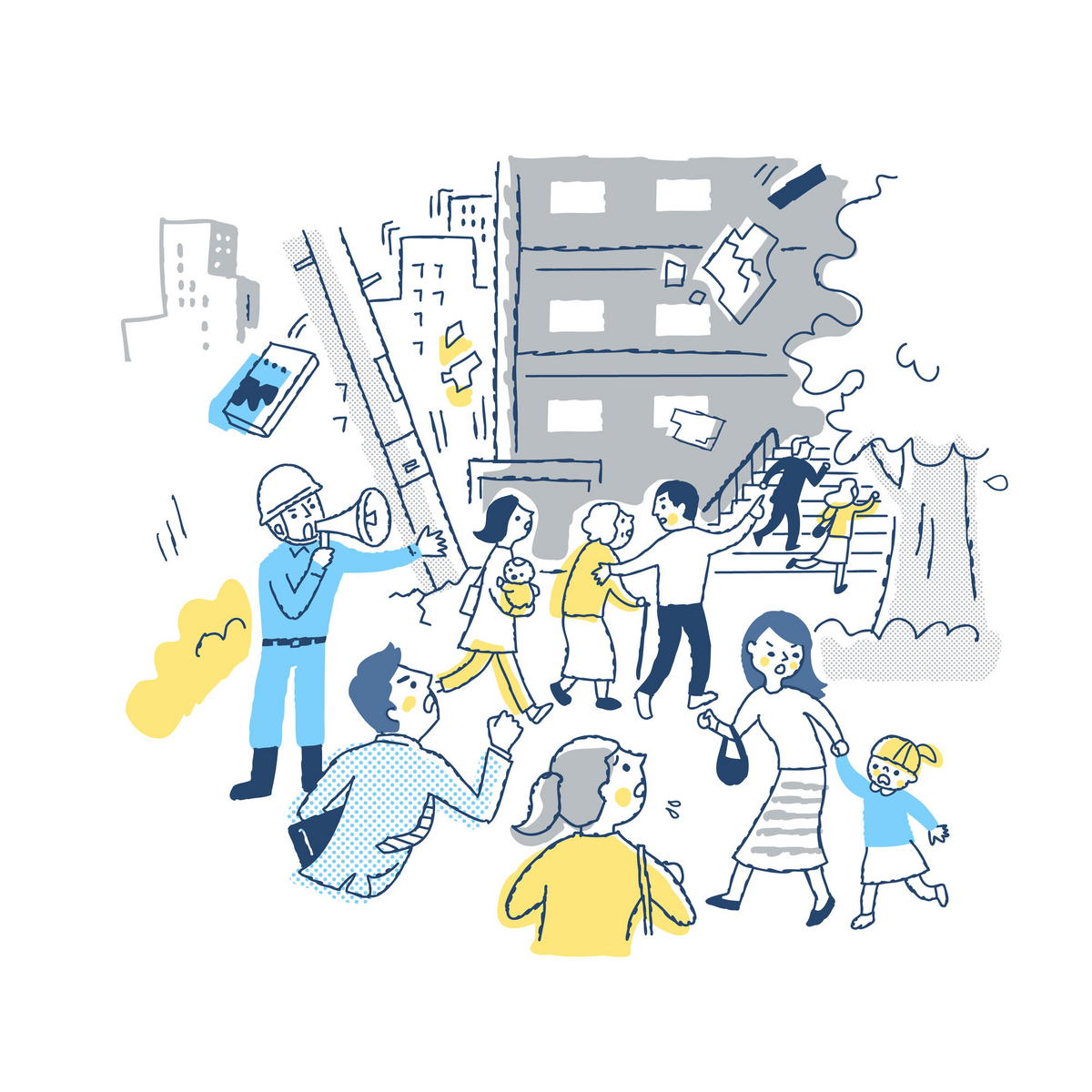
Natural disasters have been occurring in various areas of Japan. In the recent years, earthquakes have been frequently occurring and more torrential rains due to global warming have been reported. Kyoto, where many tourists visit, is no exception. What should you do if a disaster occurs when you are enjoying sightseeing? You can prepare for disasters by checking what you should be aware of before your trip and the actions you should take during your visit.
Preparation before traveling
1. Check the weather forecast
If the weather forecast says there will be extreme weather, such as a typhoon or very heavy rain, check information about suspensions of public transportation and cancellation of flights. It is also always wise to consider postponing or canceling the visit, in order to avoid risks.
2. Goods to have with you while traveling
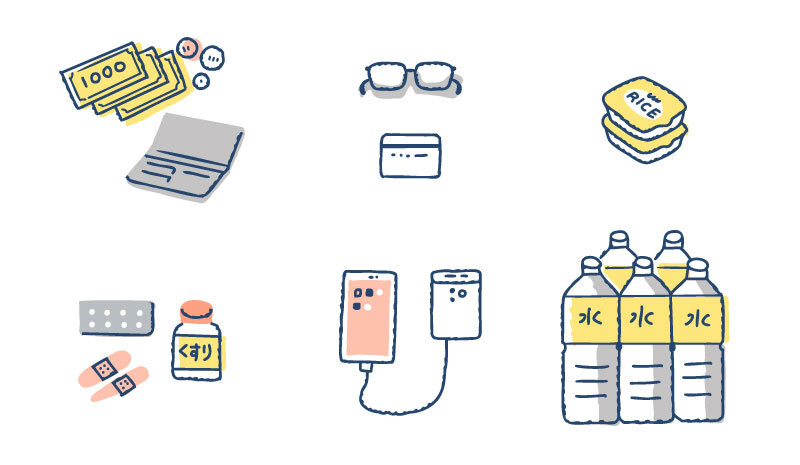
- Mobile battery chargers
- Drinking water and ready-to-eat food
- Paper maps such as sightseeing maps (It is also advisable to download maps from the Internet to your devices in advance, so that you will be able to view them off-line.)
- Contact information of your lodging (best to write it down on paper in advance)
- Passport
- Various hygiene items, including facemasks, and your regular medications (bring some extra)
- Cash (in case cashless payment methods are unavailable)
- Emergency whistle
Information and communication devices, food, drinking water and maps are essential. Paper maps are useful when smart phones and other communication devices have no reception, and also to preserve their battery power for times when it is necessary to use them. If you are taking any medications, bring more than is necessary for the planned duration of your trip, as you may have to stay longer if a natural disaster occurs.
3. Do some research on your travel destinations and lodging locations

Do some research in advance on the areas to which you are traveling. Find out if they are in urban areas or the countryside and if there are cliffs, rivers, or large ponds nearby. When you are at your lodging, check the emergency exits and evacuation routes in advance.
4. Let your family and friends know about your travel plans

It may become necessary to contact family members, friends, or acquaintances when a natural disaster or other emergency occurs while traveling. To ensure that this will go smoothly, inform them of your travel destinations and schedules in advance.
Also, there are various ways to let people know of your safety while traveling, such as the “171” Disaster Emergency Message Dial or your social media account, so decide what you will use and let people close to you know. It is also a good idea to have your phone number written down on paper to keep it with you in case your phone runs out of battery (you may need your phone number to use some services).
What to do if a natural disaster occurs during your visit to Kyoto
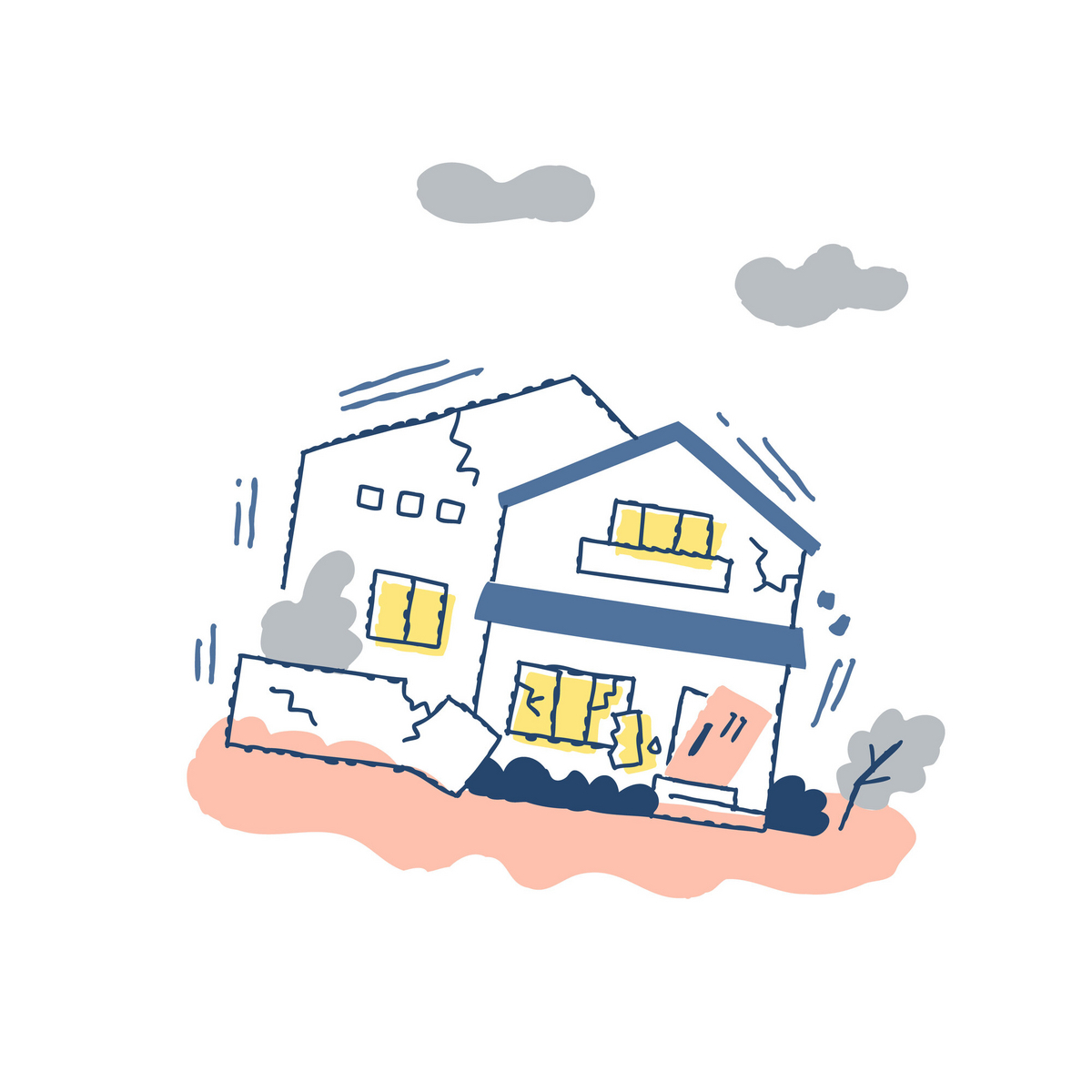
Stay away from damaged buildings
If an earthquake occurs
If an earthquake occurs when you are indoors, the first thing to do is to get into a low position, cover your head, and stay still.
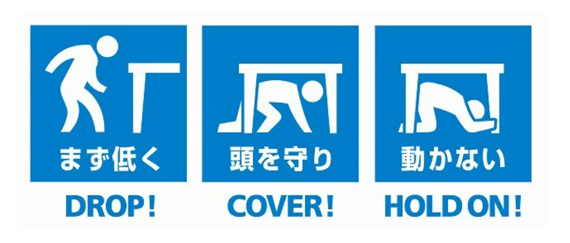
Get under something that will cover you, such as a desk, making sure to protect your head, and stay where you are until the shaking stops completely.
If you are outdoors, distance yourself from old buildings, trees, and areas where there is the risk of objects such as overhead electrical wires falling down. Once you reach a safe place, get into a low position, cover your head, and stay still until the shaking stops.
Once the shaking stops, the first thing to do is to stay away from dangerous places/objects and go to an area where it is safe. Then, it is important to obtain accurate information to make informed decisions on what to do next.
Instead of immediately heading to a train station, which can be overcrowded and unsafe, head to a nearby Emergency Evacuation Site.
Also, Kyoto has many stone lanterns, stone torii gates, and old walls that could collapse if there is an earthquake. Distance yourself from these as soon as possible when an earthquake occurs.
What are Emergency Evacuation Sites?

Emergency Evacuation Site symbol
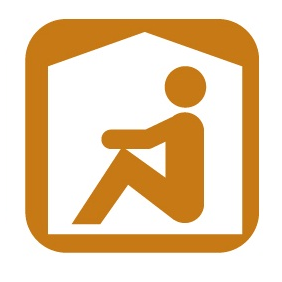
Temporary Shelter symbol
Emergency Evacuation Sites are facilities that will offer temporary refuge to tourists and commuters having trouble returning to their lodging or homes due to the suspension of public transportation as a result of disasters such as major earthquakes. There is the risk of crowd-collapse and secondary disasters caused by aftershocks when too many people go to a train station or bus stop all at once. It is best to stay calm and wait in a safe place before going anywhere.
There are also Temporary Shelters that will provide places to rest and lodge to tourists who have evacuated to Emergency Evacuation Sites in cases where public transportation services are going to take long to resume.
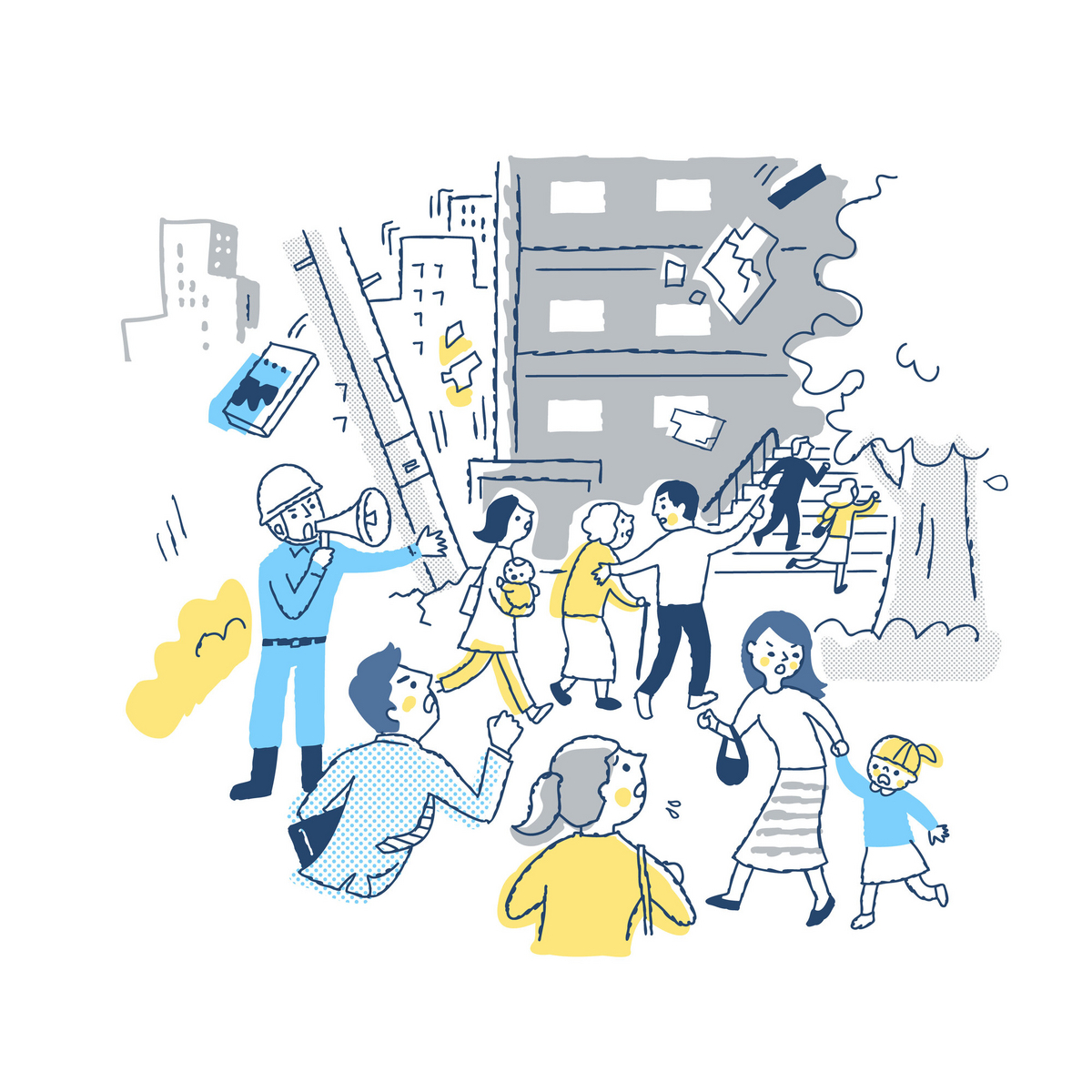
It is unsafe to hurry to a train station.
Disaster information, such as information about public transportation operations and the availability of Temporary Lodging Facilities, are provided at Emergency Evacuation Sites. You can also use tap water and restrooms and receive various necessary goods at the Emergency Evacuation Sites.
Emergency Evacuation Sites in the Kyoto Station area
Emergency Evacuation Sites in the Fushimi Inari area and the Arashiyama area
Emergency Evacuation Sites in the Gion area, the Kibune area, and the Sanzen-in area
For information on Emergency Evacuation Sites in other areas, please check the guide map below.
Kyoto City Guide Map for People Stranded during Disasters (PDF)
In case of storm/flood disaster
If a storm warning or heavy rain warning is issued during your stay in Kyoto, check evacuation information and/or follow the guidance of your lodging’s staff to relocate to a safe place. It will be best if you can obtain food and other necessities and charge your mobile batteries before the situation worsens. Places to evacuate during a flood disaster are tall, secure buildings or Designated Emergency Evacuation Sites.
There is the risk of flooding in underpasses and underground shopping centers. In addition, caution is necessary when going outdoors during a typhoon, as strong winds may blow roof tiles through the air or cause large trees to collapse.
Even after a typhoon passes and the weather clears, there is a chance that temples, shrines, and various sightseeing facilities will remain closed or suspended for some time, so it is best to check their official websites, etc. before visiting. In addition, the water levels of rivers such as Kamo River and Katsura River, which has the Togetsukyo Bridge, may be high after a typhoon, in which case it is best to stay away from them. The steppingstones on Kamo River may also be unsafe to cross.
Know how to check if family members and friends are safe (Kyoto City Disaster Prevention Website)
The City of Kyoto’s Measures to Prepare against Disasters during Sightseeing
Disaster information page on Kyoto Online Tourist Information Center Website
This webpage introduces information websites for tourists to use in case of major natural disasters, along with various maps that can be useful in such situations.
City of Kyoto Disaster Prevention Website
Here you can view hazard maps and check weather information and train operation information.
Kyoto City Returning Home Support Website
Here you can check operation statuses of Emergency Evacuation Sites and Temporary Lodging Facilities during major natural disasters. Railway operation information is available even when there is no disaster.
Kyoto City Guide Map for People Stranded During Disasters
From here you can download a guide map that will be useful during natural disasters, including a map of Emergency Evacuation Sites. It will be best to keep one with you.
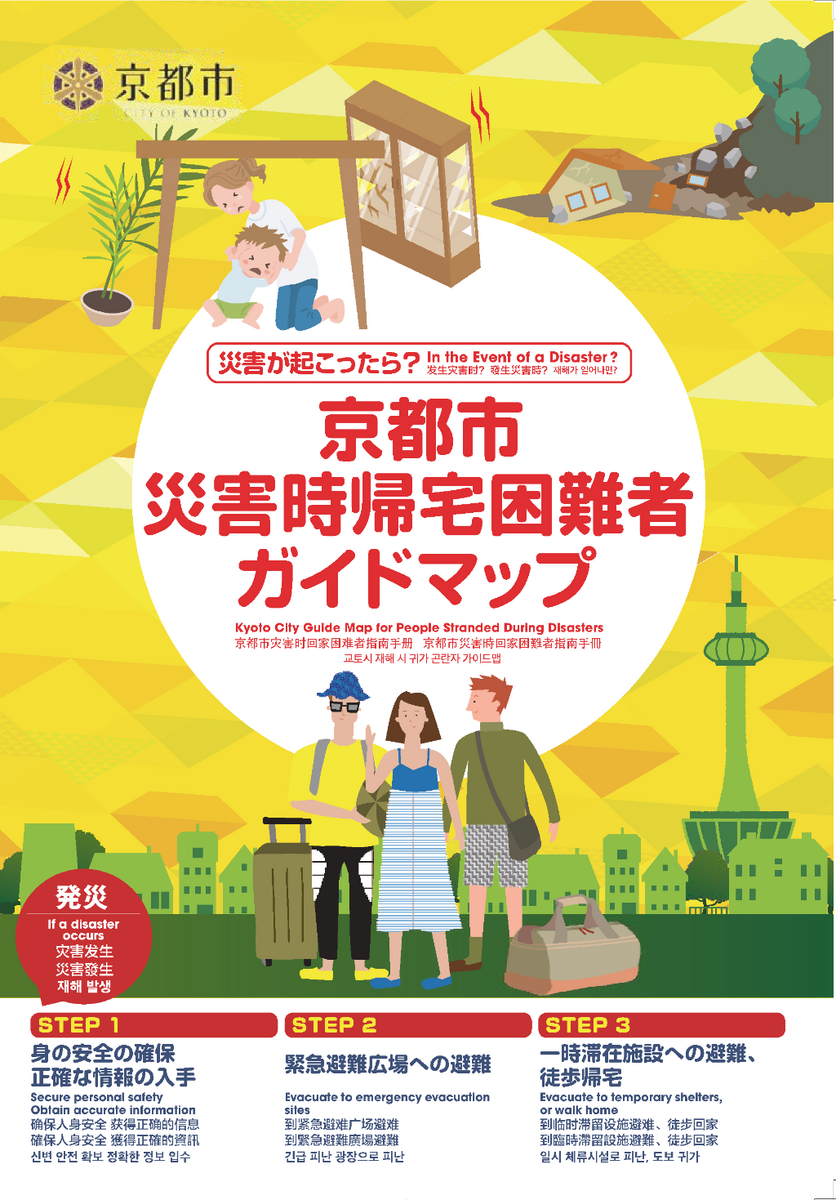
Kyoto City Guide Map for People Stranded during Disasters (cover)
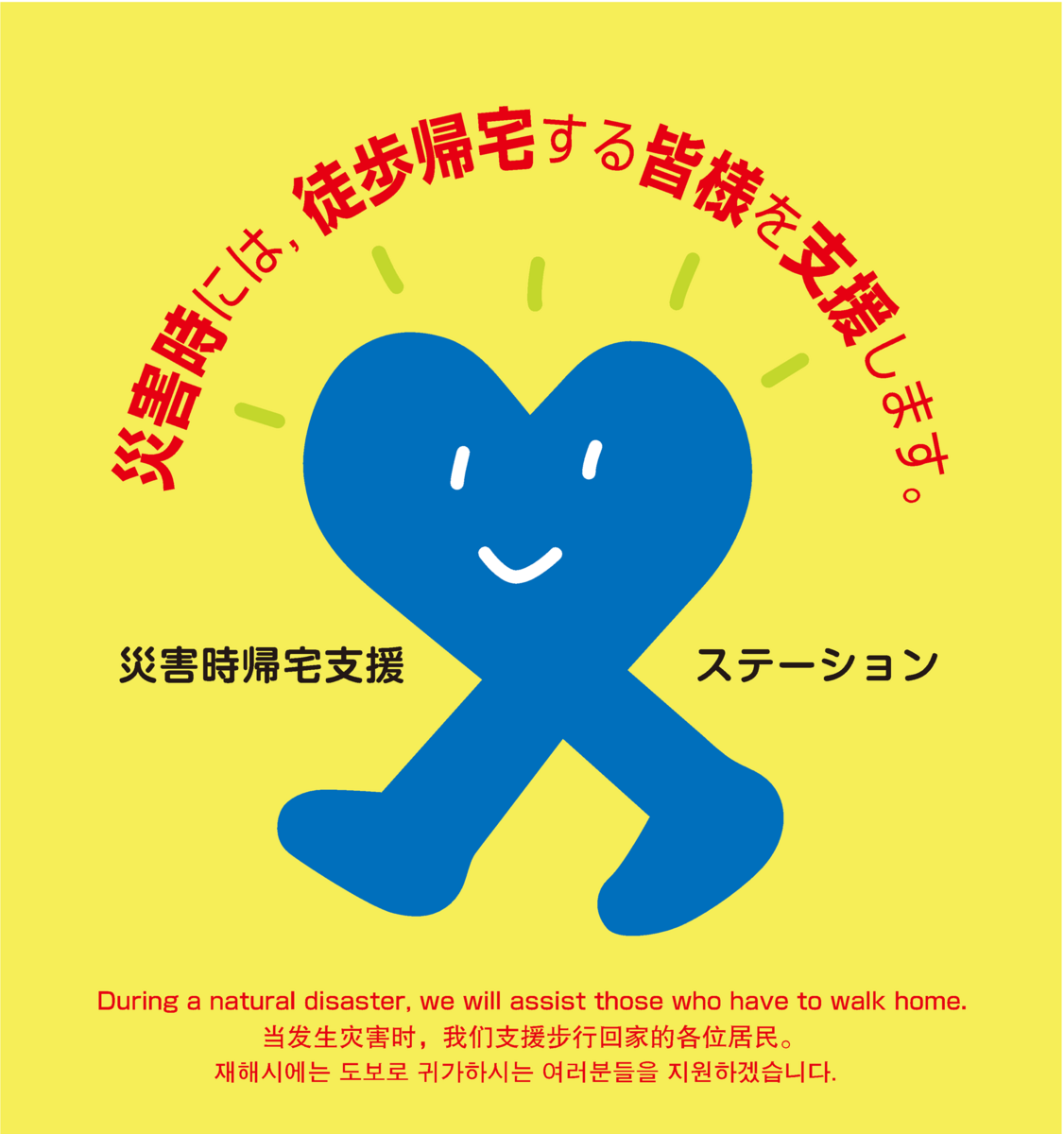
Disaster Support Stations for Returning Home
Stores and other establishments displaying this symbol are Disaster Support Stations for Returning Home and provide necessary support to people returning to their homes or lodging by foot during a disaster. They offer the use of tap water and restrooms, road information, and places to rest. See the Kyoto City Guide Map for People Stranded during Disasters for more information.
KYOTO Wi-Fi
KYOTO Wi-Fi is a free, easy-to-use, and 24h-available* Wi-Fi service provided by a telecom company partnered with Kyoto City.
*The Wi-Fi service requires you to perform an authentication process every 30 minutes when using it at public facilities, etc. During disasters, however, you can use it without going through the authentication process.
There are also several apps available in Japan that offer disaster information in multiple languages. These can be useful for ensuring safety and obtaining crucial information while traveling.
Example: JNTO’s Safety Tips app

